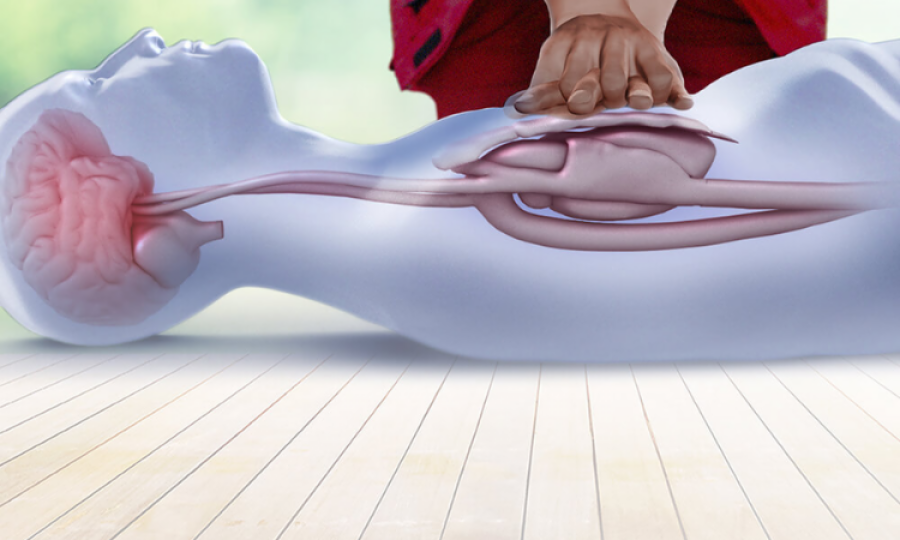Women get less rapid resuscitation care than men suffering cardiac arrest: study

EUROPE: Two recent studies regarding sudden cardiac arrest (SCA), that claims lives of some six million people every year, reveal two important facts that could be helpful in improving survival rate of those suffering from the condition; firstly, the scientists involved in the ESCAPE-NET project noticed a sharp rise in the primary care visits in the weeks before a person experiences SCA, while another study found that woman having cardiac arrest get less rapid resuscitation care than men, leading to a lower survival rate from SCA.
For the past 5 years, researchers from the European Heart Rhythm Association (EHRA) of the European Society of Cardiology (ESC), and the European Resuscitation Council (ERC) worked to improve SCA prevention and treatment through the ESCAPE-NET project, which concluded in January 2023.
During this time, more than 100 studies connected to ESCAPE-NET research have been published in peer-reviewed journals.
SCA occurs when an abnormal heart rhythm, called an arrhythmia, causes the heart’s electrical system to stop working properly. This causes the heart to unexpectedly stop beating. It is different from a heart attack, where a coronary artery becomes blocked and blood is not able to reach the heart. However, a heart attack can cause SCA or put a person at higher risk for the condition.
Symptoms of SCA include fainting or loss of consciousness, dizziness, racing or irregular heartbeat, chest pain, shortness of breath and nausea.
Because SCA occurs so quickly, the first treatment is normally calling emergency medical services and administering cardiopulmonary resuscitation (CPR) until help arrives.
Previous research shows that how quickly a person administers CPR has a direct effect on the survival rate and neurologic outcomes of the person with SCA.
In the study from the Journal of the American Heart Association, ESCAPE-NET researchers found that people who experienced out-of-hospital cardiac arrest (OHCA) were more likely to have visited their primary care doctor in the weeks before having the cardiac arrest incident.
Scientists evaluated data from almost 29,000 patients from the Danish Cardiac Arrest Registry Source who had OHCA. Upon analysis, researchers found that one week before the OHCA, 42 percent of the patients contacted their doctor. The research team also found that two weeks before experiencing an OHCA, 57.8pc of patients contacted their doctor.
“Contrary to the general assumption, sudden cardiac arrest does not strike entirely unheralded, as ESCAPE-NET data have shown that patients attend primary care more often in the run-up to an arrest compared to usual,” explains Dr Han Tan, ESCAPE-NET project leader, and cardiologist at the Amsterdam University Medical Centre AMC in the Netherlands.
“This insight may provide a lead for efforts to identify individuals at imminent risk of sudden cardiac arrest, so that it can be prevented,” adds Dr Tan.
Dr Alexandra Lajoie, a noninvasive cardiologist at Providence Saint John’s Health Center in Santa Monica, CA, says, “I hope this research educates both patients and primary providers because the fact that they’re going and seeking care before the cardiac arrest, that’s really unfortunate because somebody saw them and still didn’t prevent this from happening.”
“I think the majority of cardiac arrests are avoidable if the underlying cause is treated quickly prior to the arrest,” Dr Lajoie continued. “I think that this shows that both patients and primary care providers need to take certain symptoms more seriously, be that chest pain, palpitations, lightheadedness, fainting, [or] shortness of breath.”
And Dr Lajoie says these findings may also be linked to limited access to care. “Patients may see their primary care doctor, who is concerned about these symptoms appropriately and refers them to cardiology, but they can’t see a cardiologist or can’t have their echocardiogram or stress test due to limited access to care,” she explains .
The ESCAPE-NET study published in the European Heart Journal found that women experiencing an OHCA have a lower chance of being resuscitated compared to men.
Researchers analysed all emergency medical service (EMS) resuscitation attempts data in one province of the Netherlands, that showed women with OHCA were less likely than men to receive a resuscitation attempt by a bystander, even when it was obvious they were experiencing cardiac arrest.
Researchers also found women with OHCA who were resuscitated had lower odds of overall survival than men.
“This eye-opener must lead to public awareness campaigns aimed at narrowing the gender gap in sudden cardiac arrest management,” Dr Tan stresses.
“A lot of that’s attributed to people being concerned about respect for female anatomy or just gender concerns,” Dr Lajoie adds. “Someone who’s not well-trained may be concerned about doing deeper chest compressions on women who tend to have a smaller chest. And for effective CPR, you do need to give a good 2-inch deep chest compression.”
According to some reports, women also face discrimination as patients. Sometimes, their doctors fail to diagnose the conditions they are struggling with, or offer them the wrong diagnosis and consequently, the wrong kind of therapy.
Trending
Popular
Sindh pledges vigorous action to prevent poliovirus transmission
-
PMA stresses health equity on World ...
04:08 PM, 9 Apr, 2024 -
Dow University’s new rabies vaccine ...
12:18 PM, 28 Mar, 2024 -
IRD role lauded in advancing ...
02:53 PM, 12 Mar, 2024 -
Over one billion people worldwide ...
09:48 AM, 5 Mar, 2024




